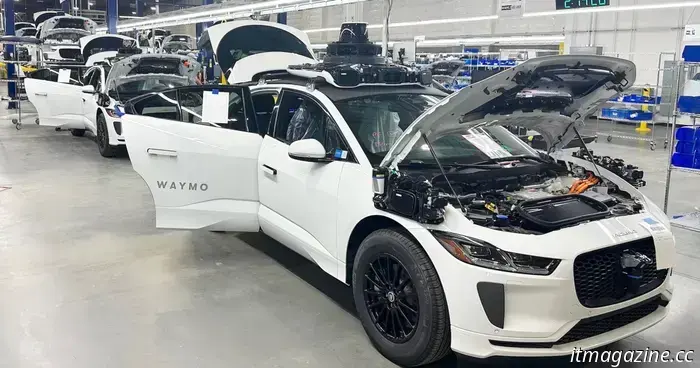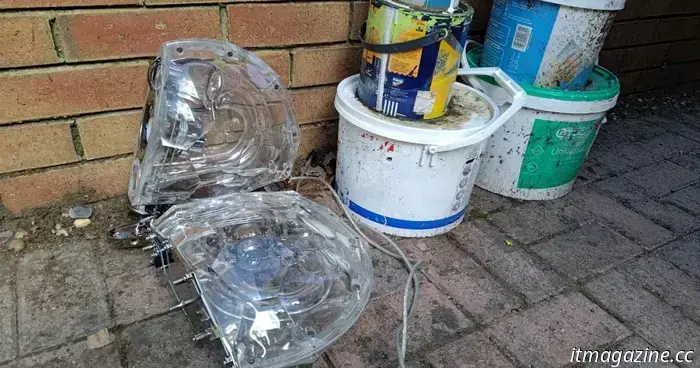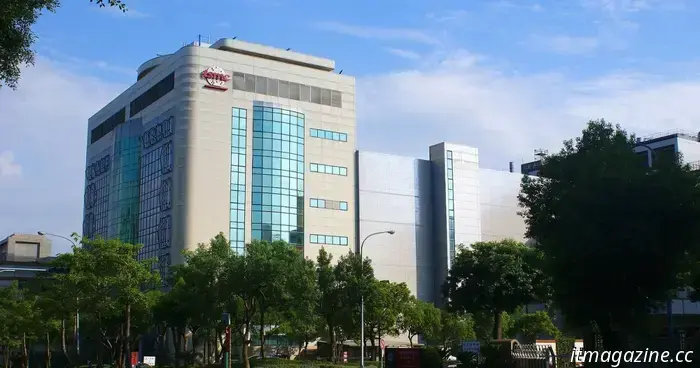
Waymo is establishing the foundation for a revolution in robotaxis.
Waymo
In recent years, Waymo has been progressing towards its long-standing objective of transforming urban transportation by introducing a fully autonomous, scalable, and sustainable ride-hailing service.
The Alphabet-owned enterprise has taken another significant step by inaugurating a new vehicle manufacturing facility in Metro Phoenix, Arizona, in collaboration with automaker Magna.
This new site, spanning 239,000 square feet, will produce thousands of Jaguar I-PACEs outfitted with Waymo’s fully autonomous technology, according to a post on its website on Monday.
The company reported that it currently operates over 1,500 autonomous vehicles in cities like San Francisco, Los Angeles, Phoenix, and Austin, having completed more than 250,000 paid rides. Waymo also plans to expand its service to Atlanta, Miami, and Washington, D.C. next year.
These new locations are expected to receive a substantial number of the more than 2,000 fully autonomous I-PACE vehicles that will be produced in 2026.
“We’re excited to bring this technology, which was once considered science fiction, to an increasing number of riders across the country,” Waymo stated.
Alphabet's CEO Sundar Pichai recently indicated that there might be plans to offer personal ownership of its autonomous vehicles, while discussions with Toyota are ongoing. However, due to significant regulatory challenges surrounding fully driverless vehicles, such developments may be some time away.
Waymo seems to be performing well in a highly competitive landscape. Several competitors, including General Motors-owned Cruise and Ford/VW-backed Argo AI, have struggled to develop the technology and related services successfully, leading to their closure in 2024 and 2022, respectively.
Nevertheless, Waymo has also faced difficulties, with various technology-related incidents on public roads leading to heightened scrutiny from regulators.
While numerous studies suggest that Waymo's autonomous vehicles are safer than human drivers, recent research by Professor Missy Cummings, director of George Mason University’s Autonomy and Robotics Center, found that although Waymo outperforms human rideshare drivers, its crash rate—about 1,000 per 100 million miles—is higher than that of the average human driver.
Cummings noted that comparing the safety of autonomous vehicles to human drivers is scientifically problematic, as humans collectively drive trillions of miles annually, while driverless cars have only accumulated tens of millions of miles, rendering current comparisons statistically invalid.
The technology for autonomous cars has seen remarkable advancements in recent years, but due to limitations in managing various traffic scenarios and weather conditions, it may take time before regulators grant companies like Waymo broader operational freedoms.
Recently, Trevor transitioned from one left-driving tea-loving island nation (Britain) to another (Japan)...
Now, anyone in Los Angeles can access Waymo's robotaxi services at any time
Getting a robotaxi ride in Los Angeles has become significantly easier. Waymo announced on Tuesday that residents of the California city can now enjoy fully autonomous rides without needing to join a waitlist. Earlier this year, Waymo began offering paid robotaxi rides in Los Angeles through its Waymo One app, but high demand led to a waitlist of nearly 300,000 individuals wanting to access the service.
Waymo and Nexar present an AI-driven study aimed at protecting vulnerable road users
Waymo stated that its collaboration with Nexar, a machine-learning technology company focused on enhancing road safety, has produced the largest dataset of its kind in the U.S., which will assist in improving the operation of its autonomous vehicles. In their latest study with Nexar, Waymo has reconstructed hundreds of accidents involving what it terms 'vulnerable road users' (VRUs), including pedestrians in crosswalks, cyclists on city streets, and high-speed motorcycle riders on highways.
Tesla's posts exaggerate self-driving capabilities, according to safety regulators
The National Highway Traffic Safety Administration (NHTSA) has expressed concerns that Tesla's use of social media and its website makes misleading claims regarding the automaker’s full self-driving (FSD) software. This warning dates back to May but was publicly disclosed in an email to Tesla on November 8. The NHTSA initiated an investigation in October into 2.4 million Tesla vehicles equipped with the FSD software after three reported collisions, including a fatal crash. The investigation focuses on FSD’s performance in "relatively common" reduced visibility situations, like sun glare, fog, and airborne dust.
In these cases, it appears that "the driver may not be aware that they are responsible" for making appropriate operational decisions or "fully grasp" the intricacies of the system, according to the NHTSA.
Additionally, "Tesla's X (formerly Twitter) account has shared or endorsed posts that showcase disengaged driver behavior,” noted Gregory Magno, the NHTSA’s vehicle defects chief investigator, in an email to Tesla. The posts, including shared YouTube videos, could lead viewers to perceive FSD as functioning like a “





Other articles
 One of our preferred digital drawing tablets is available at a 21% discount on Amazon.
The Wacom Intuos Pro Medium, included in our top drawing tablets list, can be purchased from Amazon with a $81 discount, reflecting a 21% price reduction.
One of our preferred digital drawing tablets is available at a 21% discount on Amazon.
The Wacom Intuos Pro Medium, included in our top drawing tablets list, can be purchased from Amazon with a $81 discount, reflecting a 21% price reduction.
 I was so fond of these speakers that I injured myself while attempting to repair them.
When my 15-year-old Harman Kardon speakers began to malfunction, I realized I needed to attempt a repair. However, it turned out to be in vain.
I was so fond of these speakers that I injured myself while attempting to repair them.
When my 15-year-old Harman Kardon speakers began to malfunction, I realized I needed to attempt a repair. However, it turned out to be in vain.
 As game prices increase, I need to become a more selective player.
The cost of video games is increasing, which is prompting more players to be careful and thoughtful shoppers.
As game prices increase, I need to become a more selective player.
The cost of video games is increasing, which is prompting more players to be careful and thoughtful shoppers.
 Your upcoming smartphone has received a significant upgrade in performance and battery life.
TSMC plans to begin mass production of 2nm chips by the fourth quarter of 2025.
Your upcoming smartphone has received a significant upgrade in performance and battery life.
TSMC plans to begin mass production of 2nm chips by the fourth quarter of 2025.
 Google has inadvertently revealed images of the forthcoming Android redesign.
Google inadvertently shared images of its forthcoming Android redesign.
Google has inadvertently revealed images of the forthcoming Android redesign.
Google inadvertently shared images of its forthcoming Android redesign.
 Get a 65-inch QLED for less than $400 with this offer from Best Buy.
The Toshiba 65-inch Class M550 Series 4K QLED is available this week for $370. Buy it at Amazon or Best Buy to benefit from this deal.
Get a 65-inch QLED for less than $400 with this offer from Best Buy.
The Toshiba 65-inch Class M550 Series 4K QLED is available this week for $370. Buy it at Amazon or Best Buy to benefit from this deal.
Waymo is establishing the foundation for a revolution in robotaxis.
It’s a lengthy journey, but Waymo is slowly progressing towards its long-aspired objective.
